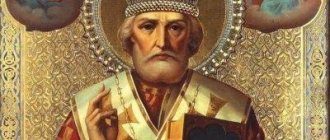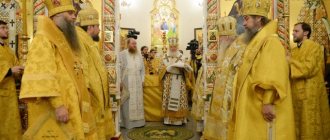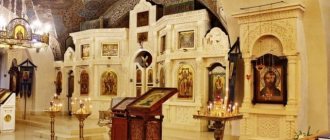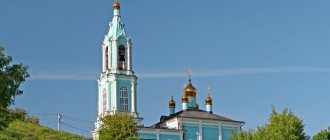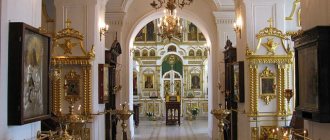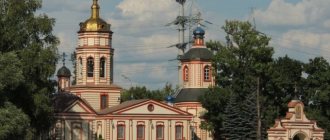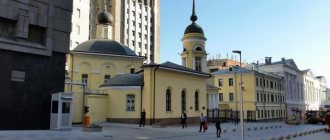Mir
Russia Moscow Church of St. Philip of Moscow in Meshchanskaya Sloboda (Moscow) Map is loading...
{"format":"leaflet","minzoom":false,"maxzoom":false,"limit":50,"offset":0,"link":"all","sort":[""], "order":[],"headers":"show","mainlabel":"","intro":"","outro":"","searchlabel":"\u2026 \u0441\u043b\u0435\ u0434\u0443\u044e\u0449\u0438\u0435 \u0440\u0435\u0437\u0443\u043b\u044c\u0442\u0430\u0442\u044b","default":"","import-annotation":false,"width ":"auto","height":"350px","centre":{"text":"","title":"""link":"""lat":55.78089440000000109876054921187460422515869140625,"lon": 37.63099439999999873407432460226118564605712890625,"icon":""},"title":"","label":"","icon":"","lines":[],"polygons":[],"circles":[ ],"rectangles":[],"copycoords":false,"static":false,"zoom":8,"defzoom":14,"layers":["OpenStreetMap"],"image layers":[] ,"overlays":[],"resizable":false,"fullscreen":true,"scrollwheelzoom":true,"cluster":false,"clustermaxzoom":9,"clusterzoomonclick":true,"clustermaxradius":80, "clusterspiderfy":true,"geojson":"","clicktarget":"","showtitle":true,"hidenamespace":false,"template":"","userparam":"","activeicon": "","pagelabel":false,"ajaxcoordproperty":"","ajaxquery":"","locations":[{"text":"\u003Cb\u003E\u003Ca href=\"/palomnik/%D0% A5%D1%80%D0%B0%D0%BC_%D1%81%D0%B2%D1%8F%D1%82%D0%B8%D1%82%D0%B5%D0%BB%D1%8F_% D0%A4%D0%B8%D0%BB%D0%B8%D0%BF%D0%BF%D0%B0_%D0%9C%D0%BE%D1%81%D0%BA%D0%BE%D0% B2%D1%81%D0%BA%D0%BE%D0%B3%D0%BE_%D0%B2_%D0%9C%D0%B5%D1%89%D0%B0%D0%BD%D1%81% D0%BA%D0%BE%D0%B9_%D1%81%D0%BB%D0%BE%D0%B1%D0%BE%D0%B4%D0%B5_(%D0%9C%D0%BE%D1 %81%D0%BA%D0%B2%D0%B0)\» title=\»\u0425\u0440\u0430\u043c \u0441\u0432\u044f\u0442\u0438\u0442\u0435\u043b\u044f \u0424\ u0438\u043b\u0438\u043f\u043f\u0430 \u041c\u043e\u0441\u043a\u043e\u0432\u0441\u043a\u043e\u0433\u043e \u0432 \u041c\u0435\u 0449\u0430\u043d\u0441\u043a\ u043e\u0439 \u0441\u043b\u043e\u0431\u043e\u0434\u0435 (\u041c\u043e\u0441\u043a\u0432\u0430)\»\u003E\u0425\u0440\u0430\u043c \u0441\u0432\u044f\ u0442\u0438\u0442\u0435\u043b\u044f \u0424\u0438\u043b\u0438\u043f\u043f\u0430 \u041c\u043e\u0441\u043a\u043e\u0432\u0441\u0 43a\u043e\u0433\u043e\u0432\ u041c\u0435\u0449\u0430\u043d\u0441\u043a\u043e\u0439 \u0441\u043b\u043e\u0431\u043e\u0434\u0435 (\u041c\u043e\u0441\u043a\u0 432\u0430)\u003C/a\ u003E\u003C/b\u003E\u003Chr /\u003E\u003Ca href=\»/palomnik/%D0%A1%D0%B2%D0%BE%D0%B9%D1%81%D1%82%D0%B2% D0%BE:%D0%90%D0%BD%D0%BD%D0%BE%D1%82%D0%B0%D1%86%D0%B8%D1%8F\» title=\»\u0421\u0432 \u043e\u0439\u0441\u0442\u0432\u043e:\u0410\u043d\u043d\u043e\u0442\u0430\u0446\u0438\u044f\u003E\u0410\u043d\u043d\u043e \u0442\u0430\u0446\ u0438\u044f\u003C/a\u003E: \u0426\u0435\u0440\u043a\u043e\u0432\u044c \u043f\u043e\u0441\u0442\u0440\u043e\u0435\u043d\u0430 \u043d\u0430 \u043c\u0435 \u0441\u0442\u0435 \u0432\u0441\u0442\u0440\u0435\u0447\u0438 \u0446\u0430\u0440\u0451\u043c \u0410\u043b\u0435\u043a\u0441 \u0435\u0435\u043c \u041c\u0438 \u0445\u0430\u0439\u043b\u043e\u0432\u0438\u0447\u0435\u043c \u043c\u043e\u0449\u0435\u0439 \u0441\u0432\u044f\u0442\u0438\ u0442\u0435\u043b\u044f\u0424 \u0438\u043b\u0438\u043f\u043f\u0430 \u043f\u0440\u0438 \u043f\u0435\u0440\u0435\u043d\u0435\u0441\u0435\u043d\u0438\u0438 \u0438\u0445 \u0438\u0437 \u0421 \u043e\u043b\u043e\u0432\u0435\u0446\u043a\u043e\u0433\u043e \u043c\u043e\u043d\u0430\u0441\u0442\u044b\u0440\u044f \u0432 \u041c\u043e\u0441\u043a\u0432 \u0443. \u041f\u043e\u0441\u043b\u0435 \u043f\u0435\u0440\u0435\u0441\u0442\u0440\u043e\u0439\u043a\u0438 \u0432 \u043a\u043e\u043d \u0446\u0435 XVIII \u0432\u0435\ u043a\u0430 \u044f\u0432\u043b\u044f\u0435\u0442\u0441\u044f \u043e\u0434\u043d\u0438\u043c \u0438\u0437 \u043b\u0443\u0447\ u0448\u0438\u0445\u043e\u0431\ u0440\u0430\u0437\u0446\u043e\u0432 \u043c\u043e\u0441\u043a\u043e\u0432\u0441\u043a\u043e\u0433\u043e \u043a\u043b\u0430\u0 441\u0441\u0438\u0446\u0438\ u0437\u043c\u0430.","title":"\u0425\u0440\u0430\u043c \u0441\u0432\u044f\u0442\u0438\u0442\u0435\u043b\u044f \u0424\u0438\u043b\u 0438\u043f\ u043f\u0430 \u041c\u043e\u0441\u043a\u043e\u0432\u0441\u043a\u043e\u0433\u043e \u0432 \u041c\u0435\u0449\u0430\u043d\u0441\u 043a\u043e\u0439 \u0441\u043b\ u043e\u0431\u043e\u0434\u0435 (\u041c\u043e\u0441\u043a\u0432\u0430)”,”link”:””,”lat”:55.7808944000000010987605492118746042251586914 0625,"lon":37.63099439999999873407432460226118564605712890625,"icon":"" }],"imageLayers":[]}
55.780891; 37.630966
Russia, Moscow, Gilyarovskogo street, 35
Moscow
Russia
Telephone:
(495) 6810539
Church of Metropolitan Philip in Meshchanskaya Sloboda
- Orthodox church of the Sretensky deanery of the Moscow diocese. The church was built at the place where Tsar Alexei Mikhailovich met the relics of St. Philip when he transferred them from the Solovetsky Monastery to Moscow. After perestroika at the end of the 18th century, it is one of the best examples of Moscow classicism.
History[edit]
Initially, in 1652, after the transfer of the relics of St. Philip to Moscow, a wooden church was built. The place where the Church of St. Philip was built was located on lands belonging to the Trinity-Sergius Monastery. The church served until 1689, and when it fell into disrepair, it was dismantled and a stone one was built in 1691. The chapel of Alexy, the Man of God, was consecrated in 1710. In 1750, the rector of the church, Priest John Fedorov, and his parishioners asked for the reconstruction of the chapel of St. Alexy.
Under the Moscow Metropolitan Platon (Levshin) in 1777, the temple began to be rebuilt. The famous architect M.F. Kazakov was involved in the work. He proposed leaving the refectory untouched and dismantling only the main part of the temple from the late 17th century. According to a certificate from the Moscow Theological Consistory, the current church “was built in 1788 with the diligence of priests Maxim Dionisiev and John Sergeev, with donations from parishioners and outside donors.” In the 1750s, Maxim Dionisiev was a deacon of the Church of St. Philippa. Since the 1760s, in documents he has already been listed as a priest of this church. Father Maxim was a very active and respected priest. Under the leadership of Priest Maxim, the church fell into disrepair and required urgent reconstruction, as evidenced by the petition preserved by him and the parishioners addressed to Metropolitan Platon of Moscow: “On January 20, 1777, a petition submitted to Your Eminence from us was submitted about the poor places designated by our parish church, and especially in In the holy altar, from almost the foundation, even to the vault, there were considerable cracks, which multiply from time to time, causing extreme danger. and that according to the inspection carried out with our mutual consent by the architect Matvey Fedorovich Kazakov, the damage to this church turned out to be from a weak foundation, which is why, in the opinion of him, the architect, it is necessary to dismantle the real church with the old altar, excluding the refectory and the chapel attached to it, all the way to the foundation and build again. And now, promoting God’s well-being and your archpastoral blessing, a total of more than five thousand rubles have been collected and prepared, both materials and cash. For this reason, Your Eminence, gracious archpastor, we humbly ask our above-mentioned parish church to be dismantled and restored again.”
Construction according to the design of M.F. Kazakov and under the leadership of the architect S. Karin lasted 10 years, and by 1787 a majestic temple was built in the style of early classicism. The built church of St. Philip, Metropolitan of Moscow in Meshchanskaya Sloboda, on the site of the old church of the same name from the 17th century, at the refectory of 1752, was conceived as the house church of the metochion of Metropolitan Platon, but the project of the metochion remained unfulfilled.
The interior of the temple amazed with the abundance of stucco molding, semi-rings of columns, a high light dome, and cut-out lucarne windows. It should be added that the harmonious harmony of architectural forms also creates a magnificent acoustic effect. The iconostasis in its lower part belonged to Kazakov, the upper part was made at the end of the 19th century.
The newly built church was consecrated in 1788. In 1827, at the expense of Prince Dolgorukov, the chapel of St. Sergius of Radonezh was added to the refectory. In the 19th century, clergy houses were built on the territory of the temple. In 1889, the merchant N.F. Stepanov built an almshouse.
In 1896, at the Church of St. Philip, a parochial school was opened, the Moscow Church Gazette reported: “... the last academic year 1896-1897 was marked by the opening of several parochial schools in the Moscow diocese, both in the capital itself and in the districts of the province. In the city of Moscow, with the beginning of the school year, a parochial school was opened in Filippovskaya, in the Meshchanskaya Sloboda church. The newly opened school operates under the leadership of the Council of the Cyril and Methodius Brotherhood of Teachers and Teachers...”
In addition to the parish school, in the parish there were the Nikolaev Children's Shelter of the Moscow Charitable Society, the City Primary School and the Railway School, where the position of teachers of the law was performed by members of the clergy of the Church of St. Philip.
At the temple there were clergy houses, a parochial school building and an almshouse.
After the revolution of 1917, an era of destruction began for the Church. The Church of St. Philip was closed in 1939. After the war, a school was built on the site of the clergy's houses. During the construction of the Olympic sports complex, everything was demolished except the temple building itself. There was a state institution in the temple.
Since April 1991, services have resumed in the temple. July 16, 1992, on the day of the feast of the transfer of the relics of St. Philip, the temple was consecrated by His Holiness Patriarch of Moscow and All Rus' Alexy II. Since 1993, restoration of the interior decoration and territory of the temple began. In 1994, the chapel of St. Sergius of Radonezh.
By 1997, the construction of the chapel and two buildings of the Siberian Compound complex was completed, which marks the spiritual unity of Moscow and the Siberian lands.
In the restoration of the church and the revival of the parish, special mention should be made of the zeal of the first rector of the church, St. Philip priest (later hieromonk) Mark (Klimenko). He fully invested the talents given to him by God into the revival of the church and parish. He passed away early (October 6, 1998, at the age of 40). The closest assistant in the reconstruction of the temple was the current headman, Vladimir Ivanovich Akinshin.
Currently, restoration work is ongoing in the temple. By December 1993, according to the sketches of the restoration artist V.V. Filatov's chapel was painted by St. Sergius of Radonezh. Rev. chapel Alexy the Man of God was painted under the guidance of icon painter I.P. Yaroslavtseva. The iconostases of the northern and southern aisles were painted by the icon painter N.I. Arkhipov. In the summer of 2003, the entire area within the temple fence was re-developed, with the lawn replaced and trees and shrubs planted. By the beginning of 2005, under the leadership of icon painter V.A. Ermilov completed the painting of the refectory part of the temple between the chapels of St. Alexy the Man of God and Rev. Sergius of Radonezh.
Moscow churches of St. Philip
Church in the name of St. Philippa, Metropolitan Moskovsky, in Meshchanskaya Sloboda. Photo from the site hram.codis.ru
The most famous church in Moscow in the name of St. Philip, Metropolitan of Moscow, is located on Prospekt Mira, near the Olimpiysky sports complex. Previously, this street was called 1st Meshchanskaya, and in 1957 it received its modern name in memory of the VI World Youth Festival, a holiday of peace.
As you know, the church was built on the site of the solemn (or penitential) meeting in Moscow of St. the relics of Metropolitan Philip, transferred to the capital city from the Solovetsky Monastery in July 1652. The place itself was very symbolic for this event.
In ancient times, at the very beginnings of Moscow history, the road from Vladimir to Kiev passed through the forest, along which Prince Yuri Dolgoruky himself rode to his great reign. It was then, in 1156, that he ordered the erection of a small wooden fortification in Moscow on Bor - Ostrozhets, later called the Kremlin.
And somewhere nearby lay one of the villages of boyar Kuchka. This area is apparently one of the oldest in Moscow. It is not for nothing that the oldest church in Moscow (outside the Kremlin) in the name of St. appeared here. Tryphona appeared in this area.
And in the 14th century, the main road to the Trinity-Sergius Lavra ran here, which is why it was called Trinity. And already in the old days, Trinity Road became a very crowded and lively place. The pilgrims traveled along it and often walked from Moscow on foot. The religious people were divided into several categories: “black people” - villagers, peasants; “red” - trading people, rich, urban; and “white” - “gentlemen”.
In 1395, along the same road from Vladimir to Moscow, the Vladimir Icon of the Mother of God was carried in anticipation of the invasion of Tamerlane - at the place of its meeting near the borders of the city, Muscovites founded the Sretensky Monastery.
In the 16th century, by sad coincidence, the same road led to Alexandrovskaya Sloboda, the oprichnina residence of Ivan the Terrible. However, the Trinity Road then led to the North, to the Solovetsky Monastery, which was closely connected with the life of St. Philip. Since the same century, foreigners and Russian merchants transported goods along this road to the city of Arkhangelsk, founded in 1584.
And in 1613, at the Sretensky Gate, the clergy, people and rifle regiments met Mikhail Fedorovich Romanov, who arrived along the same road from Kostroma.
In 1671, 1st Meshchanskaya Street was built from part of the Trinity Tract, when settlements of the burghers arose here. This was the name of the settlers from Smolensk and other Belarusian cities, recaptured during the war with Poland in 1654: city residents, or as they said then, townspeople, artisans and traders there bore the title of meshchan from the Polish “myasto”, “place” - “city” " They were settled behind the Sretensky Gate - the future Sukharevsky, where they were even granted free arable land from the palace Naprudnaya Sloboda, on the banks of the Moskvoretsky tributary, the Samoteka River.
These petty bourgeois settlements, assigned to the royal palace, were isolated from the rest of the Moscow settlements. They were independently governed by their elected representatives, who were personally headed by the appointed royal governor. In total there were 4 old petty bourgeois settlements, and all of them went down in the history of Moscow under the names of the corresponding 4 Meshchanskaya streets: after the revolution, the 2nd Meshchanskaya became Gilyarovsky Street, the 3rd Meshchanskaya became Shchepkin Street, and the 4th remained simply Meshchanskaya street.
And here, at the Trinity Highway, in July 1652 they met the relics of the martyr St. Philip, Metropolitan of Moscow. His role in Russian history was of great importance.
Saint Philip, Metropolitan of Moscow. Icon of the 20th century (From the Refectory of St. Sergius Church of the Trinity-Sergius Lavra). Source: www.days.ru
Saint Philip was born in 1507 into the noble and ancient boyar family of the Kolychevs and was named Theodore. At the age of 30, he took monastic vows at the Solovetsky Monastery under the name Philip and after 9 years, in 1546, he became its abbot.
And then there followed the tsar’s long persuasion to accept the rank of Metropolitan of Moscow - there was no patriarchate at that time. And in 1566 St. Philip agreed. There is a version that in the same year of his accession to the metropolitan see, St. Philip founded the famous St. Nicholas Church “Red Bell” near the Kremlin in Moscow in Kitai-Gorod with a chapel in the name of St. Zosima of Solovetsky - in memory of the peaceful days of his stay in the Solovetsky monastery. And there is a version, more like a legend, that the main altar of this church was originally Zossimov’s, and when the saint fell into disgrace, Ivan the Terrible in a rage ordered the reconsecration of the Kitaygorod temple, which was renamed in honor of St. Nicholas the Wonderworker. And after Metropolitan Philip was canonized, during the next renovation of the temple at the end of the 17th century, S.G. Naryshkin, honoring the memory of the saint, built a chapel in the church in honor of the Solovetsky saints Zosima and Savvaty.
A year before Philip was installed as Metropolitan of Moscow, in 1565, a royal decree was issued on the establishment of the oprichnina, and the Metropolitan of Moscow decided to confront the king in his numerous executions, torture, and other atrocities that harmed both the people and the Russian state. In 1568, at a service in the Assumption Cathedral, Philip openly refused to bless Ivan the Terrible, who humbly approached him.
And already in November of the same year, by decision of the cowardly Boyar Duma, the saint was arrested. During the service, guardsmen in black robes burst into the Assumption Cathedral, tore off the metropolitan's church vestments, and with their brooms they pushed him out of the church, put him on simple wood and took him away.
At first, the Metropolitan was imprisoned in the cathedral of the Moscow Epiphany Monastery. By order of Ivan the Terrible, a hungry bear was allowed in to see him, but the beast did not touch the saint. And then, under the strictest guard, the disgraced metropolitan was taken to the Tverskoy Otroch Monastery, where in December 1569 he died at the hands of Malyuta Skuratov - the chief guardsman strangled him with a pillow.
And in the Adolescent Monastery on August 8, 1584, the relics of the saint were found - just five months after the death of Ivan the Terrible. From there they reverently transferred him to his beloved Solovetsky Monastery.
And already in 1652, the holy relics of the martyr were repentantly met by Tsar Alexei Mikhailovich along with his entire court, the clergy and Muscovites. And the relics were escorted to Moscow from the Solovetsky Monastery by the tsar’s “sobin friend,” Nikon, the future patriarch.
From the Trinity relics of St. Philip were transferred to the Place of Execution, where they were put up for worship and there, on Red Square, according to legend, one girl was healed from them. Then they were transferred to Cathedral Square, where another healing took place, and then to the Assumption Cathedral, where they stood for another 10 days for worship, and again there were many healings.
All these ten days in Moscow the bells were ringing from morning to evening, as on Holy Week. The holy relics of Metropolitan Philip were placed in a shrine in the very place where he was captured by the guardsmen in 1568.
And in memory of the penitential meeting near the Trinity Road, there was a large oak cross in that place - initially in an ancient stone chapel, which later became known as the “Chapel of the Cross.” They said that this chapel was older than the cross and had stood there since time immemorial. According to legend, St. Sergius himself once rested there, often walking from his monastery to Moscow and back. And then the kings who were going on pilgrimage to the Lavra stopped there.
Soon another wooden cross was placed separately at the outpost itself, which received from it its famous old Moscow name Krestovskaya (in Soviet times Rizhskaya). Under this name, it became part of the Kamer-Collezhsky Val - the customs border of Moscow in 1742.
And in the old days, it was considered obligatory for those going on a pilgrimage to first pray at the Moscow shrine at the Krestovskaya outpost, and then go to the Lavra.
And already in 1677, here, in Meshchanskaya Sloboda, the first church appeared in the name of St. Philip, Metropolitan of Moscow. At first it was made of wood, but in 1691 it was rebuilt in stone. And at the beginning of 1710 of the 18th century, a chapel was built in it in the name of Alexei, the man of God.
Church in the name of St. Philippa, Metropolitan Moskovsky, in Meshchanskaya Sloboda. Photo from the site hram.codis.ru
In the second half of the same 18th century, a new, now existing Filippovskaya Church was built in the style of Moscow classicism, with a beautiful, one might even say, famous rotunda, which has survived to this day.
It is traditionally believed that Matvey Kazakov built it in 1777-1788. Sometimes, however, the names of the architect M.F. Karpov and Semyon Karin are mentioned - the same one who later led the work on the arrangement of the first boulevard in Moscow on the site of the demolished wall of the White City, Tverskoy. And according to Academician I. Grabar, the author of the project for the Philippov Church was Vasily Bazhenov himself.
The fact is that in the second half of the 18th century there, in the Meshchanskaya Sloboda, it was planned to establish the Moscow courtyard of Metropolitan Plato. And the Filippovskaya Church was built beautiful and durable as a future house church at this courtyard. However, this project was not implemented, and the church remained an ordinary parish church.
During Soviet times, the church was closed and a warehouse was built in it. After the revolution, the cross was removed from the Krestovskaya outpost, and according to the testimony of A.Ch. Kozarzhevsky, an expert on Moscow history, it was transferred to the neighboring Znamenskaya Church in Pereyaslavskaya Sloboda, where it was kept in the altar.
At the same time, at Krestovskaya Zastava, two famous water towers of the Mytishchi water supply system, built back in 1893, were broken. After the construction of the Moscow-Volga canal, this water supply system was no longer needed.
And the Krestovskaya outpost itself was renamed Rizhskaya for the atheistic celebration of the 800th anniversary of Moscow in 1947 - after the station that stood on it since 1899, from which people departed for that Baltic city. (Before the revolution it was called Vindovsky.)
In addition, the neighboring Protopopovsky Lane was renamed Bezbozhny back in 1924, after the editorial office of the popular magazine “Bezbozhnik” was located there. For a very long time, the Philippian Church had this exact address.
Back in the 90s, it housed the archives of a state institution, although the temple building itself was under state protection as a monument of history and culture. And only in 1991 services began there.
Another Moscow church in the name of St. Philippa was consecrated as a brownie in the famous estate of Countess Sollogub on Povarskaya Street. In Moscow it is known mainly as the “house of the Rostovs”, where Leo Tolstoy “settled” the heroes of the epic “War and Peace”.
Another thing is less known: this legendary estate, built in 1802 for Prince A.N. Dolgoruky, subsequently passed from his family to the Bode-Kolychev barons - descendants of St. Philip Kolychev. In 1856, they added a small house church to the estate in the name of the saint, and collected valuable ancient icons into it. Then the estate changed its owners again and until the revolution belonged to Countess Sollogub.
The church was closed shortly after the revolution in 1918-1920, when the estate housed first a house of arts, where Marina Tsvetaeva, who lived next door on Borisoglebsky Lane, worked, then a literary institute, and then, from 1932, the residence of the Union of Writers of the USSR. The dome with the cross was broken, and the building of the former church became part of the main structure.
Current state[edit]
Description[edit]
During the reconstruction of the church, Matvey Kazakov added a rotunda church to the refectory and bell tower of 1750-1752. The rotunda is decorated with platbands, a frieze and four-column Ionic porticoes with stucco. The rotunda is crowned with a light dome-lantern. The interior of the church in the western part is decorated with columns of the large order arranged in a semicircle; in the altar part the same semicircle is made of columns of the small order.
Activities of the parish[edit]
At the temple there are:
- Sunday school for children and adults
- Youth group "Filippovtsy"
- Social service
Pilgrim[edit]
Schedule of services:
On Sundays and patronal feasts of St. Philip liturgy at 10 o'clock. The day before the all-night vigil at 17:00.
On Sunday evening at 16:00 Vespers is celebrated with an akathist to St. Philip (During Great Lent - Akathist to the Passion of Christ).
On the remaining days of the week (except Monday, unless there is a great holiday), the service is celebrated at 9 o'clock. - Matins, liturgy.
Fridays at 5 p.m. – Vespers with an akathist alternately – to the Iveron Icon of the Mother of God and the “Three-Handed” Icon of the Theotokos (except for the days of Lent and Great Feasts).
Current schedule of services for the month
Address of the Church of the Resurrection of the Word on Arbat:
121019 Moscow, Filippovsky lane, building 20; Directions to the Arbatskaya metro station (exit towards Gogolevsky Boulevard); Telephone.
In fact, it would be more correct to call the Church of the Apostle Philip on Arbat something else, for it was consecrated as the Church of the Resurrection of the Word. And only the chapel is consecrated in honor of the Apostle Philip. But it seems to us that there are two reasons for this change of names. The first reason is this. It is believed that on this very spot in the mid-16th century there stood a wooden church in honor of the Apostle Phillip. It was erected in honor of his saint and near his country yard by Metropolitan Philip of Moscow, whose fate turned out to be as tragic as that of the Apostle Philip: the Metropolitan, as we know, opposed the atrocities of the oprichnina of Ivan the Terrible, was defrocked, exiled, and later strangled by Malyuta Skuratov. In his fate, most likely, lies the second reason why the temple is named after the Apostle Philip. This is a tribute to Metropolitan Philip for his feat. The current stone church was built with the care of the steward Ivan Kosmin in 1688. And it served as a parish church for the residents of Icon Settlement. In 1812, the church suffered greatly at the hands of the French conquerors. So much so that there was even a decision to abolish it altogether. Most likely, this would have happened, but it was precisely at this time that the Patriarch of Jerusalem sent a request to Emperor Alexander I to grant the Jerusalem Patriarchate a metochion in Moscow, where the monks of the brotherhood of the Holy Sepulcher could stay to collect donations for the restoration of the burnt temple. Thus, the Jerusalem Metochion was established in Moscow, to which the Church of the Apostle Philip was transferred. And the Patriarch of Jerusalem sent as a gift to the metochion a part of the Tree of the Life-Giving Cross of the Lord and the right hand of the Great Martyr Eustathius Placis. Later, the temple was given particles of the relics of St. John, the Patriarch of Alexandria, the Great Martyr Nikita, the Great Martyr Paraskeva Friday, the unmercenary and wonderworker Cosmas, and the Venerable Alypius the Stylite. A gilded ark was specially built for these holy gifts. They are still there today. In 1918 the courtyard was closed. But the temple remained operational. And in 1989, under him, the courtyard of the Jerusalem Patriarchate was reopened. The only loss was the bells, except for one. Nowadays this small cozy church with a low hipped bell tower is located at 20 Filippovsky Lane.
Website address: https://podvorie.orthodoxy.ru/
